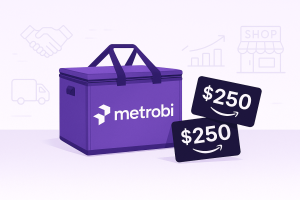Social media campaigns in 2025 look nothing like they did five years ago. While businesses scramble to copy last year’s viral hits across different social media channels and platforms, while also seeking new campaign ideas, they are also looking for social media content ideas to innovate. Industry leaders are quietly rewriting the playbook, creating campaigns that generate not just likes but actual revenue.
The data tells a striking story: only 12% of social media campaigns achieve their business objectives. What separates these winners from the struggling majority regarding successful social media campaigns and marketing campaigns? It’s not bigger budgets or fancier technology. According to a report by Nielsen, consistent measurement, clear goals, and audience alignment are the biggest factors in campaign success .
The most successful social media campaign examples of 2025 share specific characteristics that most businesses completely overlook. They’re not using the social media platforms the way they were designed to be used—they’re breaking rules and creating new ones.
Take HealthBridge’s recent campaign. Their engagement rate was 8× industry average with a marketing budget smaller than most startups, making it a winning social media campaign that demonstrated the effectiveness of the entire social media campaign. Or consider how Regional Bank outperformed financial giants by doing exactly what conventional wisdom says not to do.
These companies aren’t just posting social media posts for marketing campaigns—they’re building systems that convert social media attention into social sharing, other marketing efforts, and business results. The good news? These systems can be learned and replicated.
In this guide, I’ll show you exactly how leading companies structure their social media campaigns to encourage users and participation. , the specific tactics they use and the social media campaign examples that illustrate these principles. , and how you can apply these principles to your business—regardless of your industry or budget.
The strategies that worked yesterday won’t work tomorrow. But the social media campaign examples you’re about to learn will.
Lower your delivery costs by 23%
How we reduce costs:
- No delivery vehicle expenses
- Optimized local routes
- Pay-per-delivery model
- Average 23% delivery cost reduction
Leading Social Media Campaign Examples
Learn concrete examples of successful social media campaigns from brands like Duolingo and Semrush
Understand the exact steps used by high-performing social media campaigns
Discover essential elements needed for standout results in the current social landscape
Step-by-Step Breakdown of a Successful Social Media Campaign Ideas
Social media campaigns that succeed in 2025 follow specific patterns. Let’s examine three recent social media campaigns that campaign tapped into various ideas from the best different social media platforms that delivered exceptional results, breaking down exactly what made them work.
Duolingo’s TikTok Ban Response Social Media Campaign
Duolingo created a social media campaign that serves as a perfect case study in responsive marketing. When news broke about a potential TikTok ban in the US, the language learning app quickly took action.
Step 1: Identify the trending moment
Duolingo’s team noticed real-time data showing increased downloads of a Chinese app called RedNote. They recognized this as an opportunity to promote their Mandarin language courses.
Step 2: Create relevant, timely content
The team developed short videos featuring their owl mascot reacting to the news. The content highlighted how learning Mandarin could be useful during this cultural moment.
Step 3: Include data to support the message
Duolingo incorporated actual statistics from social media marketing showing the rising interest in Mandarin courses on their platform. This added credibility to their message.
Step 4: Deploy across multiple platforms
While the campaign referenced TikTok, Duolingo smartly shared the content across multiple social media platforms, including Instagram, Twitter, and LinkedIn to maximize reach.
Step 5: Add humor to increase shareability
The campaign used light humor about cultural differences rather than political commentary, making it accessible and shareable.
The results were significant. Engagement rates jumped 78% above their typical posts, leading to a significant increase in website traffic and Mandarin course sign-ups by 32% during the campaign period.
Semrush’s “Chris” Character Campaign
Semrush, the SEO and digital marketing platform, created a recurring character named Chris who appeared in a series of videos targeting digital marketers.
Step 1: Develop a relatable character
Chris was created to represent the everyday challenges and creative ideas digital marketers face. His persona was carefully crafted to be someone the target audience would recognize from their own work lives.
Step 2: Script scenarios around common pain points
Each video placed Chris in situations that highlighted specific social media marketing challenges, from algorithm changes to client expectations.
Step 3: Keep production quality consistent but accessible
Videos maintained professional quality while avoiding an overly polished look that might seem too corporate or inauthentic.
Step 4: Time releases with industry events
Semrush scheduled video releases to coincide with major social media marketing conferences and algorithm updates, making the content extra relevant.
Step 5: Encourage community interaction
Each video ended with questions that prompted marketers to share their own experiences in the comments.
The social media campaign’s top-performing video received over 150,000 likes on TikTok. The character became so recognizable that marketers began referencing “Chris situations” in industry conversations.
SheerLuxe’s #OfficeVlog Social Media Campaign
SheerLuxe, a lifestyle brand, took a different approach by launching a TikTok video series called #OfficeVlog that showed behind-the-scenes looks at their daily operations.
Step 1: Select authentic moments to capture
The team identified regular office activities that would interest their audience, from editorial meetings to product unboxings.
Step 2: Assign filming responsibilities to team members
Rather than using professional videographers, SheerLuxe had staff members record content on their phones during their normal workday.
Step 3: Create a consistent format and schedule
Videos followed a similar structure: morning routines, team interactions, and day-in-the-life moments, posted at the same time each week.
Step 4: Include personal touches
Team members shared their personal thoughts and reactions, creating emotional connection points with viewers.
Step 5: Respond to viewer questions in follow-up videos
The team noted common questions in comments and created dedicated follow-up videos to answer them.
The social media campaign consistently achieved tens of thousands of views per video. More importantly, SheerLuxe reported a 45% increase in website visits from TikTok and a noticeable boost in brand loyalty and recognition among younger demographics.
Essential Elements for a Standout Social Media Campaign
What makes certain social media campaigns succeed while others fade into the digital background? Analysis of top-performing social media campaigns in 2025 reveals several critical components that can help raise awareness, and the key takeaway is that understanding these elements is vital. .
Authenticity and Human Connection
The most effective social media campaigns feature real people and genuine emotions. This authenticity builds trust with audiences, especially when paired with a consistent brand voice, who are increasingly skeptical of polished corporate messaging.
Key implementation steps:
Show real employees instead of stock photos or actors
Document actual workplace moments and interactions
Include candid reactions and authentic emotions
Share both successes and challenges
Allow individual personalities to shine through
SheerLuxe’s #OfficeVlog campaign exemplifies this approach. By featuring actual team members going about their normal workday, they created content that felt genuine rather than manufactured. This authenticity translated to higher engagement rates and stronger brand affinity.
Timeliness and Cultural Relevance
Social media campaigns that connect to current events, trends, or cultural moments gain immediate relevance and typically see higher engagement rates.
Key implementation steps:
Establish a trend monitoring system
Create response templates for quick deployment
Develop a rapid approval process for timely content
Build content that adds value to trending conversations
Avoid forced connections to unrelated trends
Duolingo’s TikTok ban campaign succeeded because it connected their product (language learning) to a current event (interest in Chinese apps) in a way that felt natural and helpful rather than opportunistic.
Platform-Specific Optimization
Successful social media campaigns recognize that each social platform has unique characteristics, audience expectations, and content formats.
Key implementation steps:
Adapt content dimensions and formats for each platform
Adjust messaging tone to match platform culture
Leverage platform-specific features (e.g., Instagram Stories vs. Feed)
Time postings based on platform-specific peak engagement hours
Create platform-exclusive content to encourage cross-following
The strongest campaigns tailor content for each platform rather than simply cross-posting identical content. For example, Semrush’s Chris character appeared in longer-form LinkedIn videos with detailed marketing tips, while TikTok featured snappier, more humor-focused versions.
Data-Informed Creative Decisions
Modern standout campaigns blend creativity with data-driven decision-making.
Key implementation steps:
Analyze previous post performance before planning new content
Test multiple creative approaches with small audience segments
Monitor real-time engagement metrics to guide campaign evolution
Use audience demographic data to refine targeting
Implement A/B testing for captions, posting times, and visuals
Duolingo’s campaign succeeded partly because it was built on real-time data showing increased interest in Chinese apps. This data-informed approach made their message more relevant and credible, appealing to devoted brand advocates .
Joe Pulizzi advises finding “your sweet spot: the intersection between what you know and what your customers need to know.” This targeted approach helps create content that resonates with your audience and is more likely to perform well.
Interactive Elements That Foster Community
Campaigns that invite participation rather than passive consumption create deeper engagement and actively encourage participation. create deeper engagement and stronger community bonds among brand advocates .
Key implementation steps:
Include clear calls to action that invite a response
Create templates or challenges that are easy to participate in
Recognize and highlight user contributions
Ask genuine questions that prompt thoughtful responses
Create content formats that naturally encourage sharing
The Semrush campaign excelled here by ending videos with questions that prompted marketers to share user generated content and their own experiences in comments, creating a sense of community around shared professional challenges.
When examining successful social media campaigns, these five elements consistently appear across industries and platforms. Companies that master these components create campaigns that not only reach their target audience but also inspire action and build lasting brand relationships without relying solely on paid advertising .
Step-by-Step Guide to Designing Your Own Social Media Campaign
Clear campaign planning creates a measurable business impact
Strategic content and engagement drive better results
Data-driven optimization improves ROI
Preparation and Goal Setting
Setting clear goals is the first step in creating any effective social media campaign. You can start by defining what success looks like for your organization. Is it increased brand awareness, lead generation, or direct sales? Write down 1-3 specific objectives using the SMART framework—make them Specific, Measurable, Achievable, Relevant, and Time-bound.
For example, instead of “increase followers,” a SMART goal would be “increase Instagram followers by 20% within 3 months to expand our audience of HR professionals.” This precise approach allows you to measure success accurately and adjust your strategy as needed. When setting goals, align them with broader business objectives to ensure your social media efforts contribute meaningfully to company growth.
Define Objectives and Target Audience
After establishing your goals, focus on defining your target audience with precision. It is better to create detailed audience personas that capture key demographics like age, location, and job titles, but also go deeper into their challenges, goals, and social media behaviors.
Consider questions like:
Which platforms does your audience use most actively?
What content formats do they engage with?
When are they most active online?
What problems are they trying to solve?
Use existing customer data from your CRM, website analytics, and previous campaign results to inform these personas. If you lack this data, conduct surveys or interviews with current customers to gain insights. The more specific your audience understanding, the more effective your campaign will be.
Select Platforms and Budgets
Choose platforms based on your audience research, not personal preference or what competitors are doing. For B2B companies, LinkedIn and Twitter might yield better results than TikTok, while retail brands might focus on Instagram and TikTok for higher engagement through a branded hashtag .
When planning your budget, allocate resources across these key areas:
Content creation (30-40%)
Paid promotion (30-40%)
Tools and analytics (10-15%)
Testing and optimization (10-15%)
For a small business, a monthly budget of $2,000-$5,000 can be effective when strategically deployed. Larger brands might invest $10,000-$50,000 monthly for comprehensive campaigns. Start with a conservative budget and increase spending on tactics that show promising early results.
Content Creation and Scheduling
Effective content strikes a balance between what your brand wants to say and what your audience wants to hear. You can start by creating a content strategy document that outlines key messages, brand voice guidelines, and content pillars (3-5 core themes your content will address).
Your content should solve problems, answer questions, or entertain your audience while subtly connecting to your brand values and offerings. For each content piece, ask: “Would someone save, share, or respond to this?” If not, reconsider its value.
Develop Engaging and Relevant Content
Create content in batches organized by theme, platform, and format, and track its performance using tools like google analytics . This approach ensures consistency while allowing you to tailor content to each platform’s unique requirements. For example, a single concept might become:
A 60-second TikTok video
A carousel post on Instagram
A longer-form LinkedIn article
A Twitter thread with key points
When creating content, follow these steps:
Write compelling headlines that create curiosity
Use strong visuals (images perform 40% better than text-only posts)
Include clear calls-to-action
Keep copy concise and focused
Add relevant hashtags based on platform best practices
Plan a Comprehensive Content Calendar
Organize your content using a calendar tool like Google Sheets, Asana, or specialized software like Hootsuite or Buffer. Your calendar should include:
Post dates and times
Content copy and visuals
Platform(s) for each post
Campaign tags for tracking
Team member responsibilities
Approval status
Plan content at least one month in advance, with a 3-month strategic outlook. This timeline gives you flexibility to respond to trends while maintaining consistency. Block specific times for:
Campaign content (60%)
Trending topics and real-time engagement (20%)
Community interaction and responses (20%)
Schedule posts during your audience’s peak activity times. These vary by platform and audience, so check your analytics data. Generally, B2B content performs best Tuesday-Thursday during business hours, while B2C content often sees higher engagement evenings and weekends.
Launch and Engagement
Planning a strategic launch increases initial momentum and visibility. It is best to begin with a soft launch to your most engaged followers through email or direct messages 2-3 days before the public launch. This creates early engagement and allows you to make last-minute adjustments.
For the official launch, coordinate across all relevant platforms simultaneously with slightly different messaging for each channel. This cross-platform approach creates multiple touchpoints without seeming repetitive.
Strategies for Launching Your Campaign
Follow this launch timeline for optimal results:
Two weeks before: Brief your internal team on campaign goals and key messages
One week before: Schedule all launch day content
Three days before: Send teaser content to key stakeholders and loyal customers
Launch day: Post across all platforms; have team members share and engage
Launch +1 day: Share initial results and highlights with your team
Launch +3 days: Analyze early performance data and make first adjustments
During the first 24-48 hours, assign team members to actively respond to all comments and messages. This early engagement signals to algorithms that your content is generating interest, potentially increasing its reach.
Techniques for Audience Interaction
Engagement isn’t automatic—you need to actively foster it. Create opportunities for interaction by incorporating emotional appeal :
Asking questions in your captions
Creating polls and surveys
Responding to every comment in the first 24 hours
Using interactive features like Instagram Story polls or LinkedIn polls
Sharing and commenting on user-generated content
Set up notification systems to alert your team when people engage with your content. For best results, it is better to aim to respond within 1-2 hours during business hours for best results. This responsiveness shows your audience that you value their input and encourages further engagement.
Monitoring and Optimization
Effective campaigns evolve based on data and insights derived from online behavior. Set up tracking from day one using both platform analytics and third-party tools to capture the complete picture of your campaign performance.
Monitor these key metrics:
Reach and impressions (visibility)
Engagement rate (likes, comments, shares)
Conversion metrics (clicks, sign-ups, purchases)
Audience growth and retention
Sentiment analysis (positive/negative responses)
Record this data in a consistent format that allows for easy comparison across time periods and platforms.
Track Performance Metrics
You can create a simple but comprehensive tracking dashboard that your team can access. Update it at least weekly during active campaigns, noting any significant changes or trends. Compare your actual results against your initial KPIs to assess progress toward goals.
Look beyond vanity metrics like follower count to focus on metrics that indicate real business impact:
Cost per engagement (total spend divided by engagements)
Conversion rate (actions taken divided by impressions)
Engagement growth rate (week-over-week percentage changes)
Share of voice (your mentions compared to competitors)
Tag all campaign links with UTM parameters to track traffic and conversions in your website analytics. This connection between social engagement and website behavior reveals which content drives meaningful action.
Adjust Strategies Based on Data Insights
Schedule weekly optimization meetings during your campaign to analyze performance data and make strategic adjustments. Focus on answering these questions to develop successful viral marketing campaigns:
Which content formats are generating the most engagement?
What times of day show highest response rates?
Which platforms are delivering the best ROI?
What messaging resonates most with our audience?
Are we meeting our KPI targets? If not, why?
Based on these insights, implement a testing framework that allows you to experiment with:
Different creative approaches
Varied posting times
Adjusted audience targeting parameters
Modified calls-to-action
Alternative content lengths and formats
Make one change at a time so you can accurately attribute performance shifts. Document all changes and their results to build an internal knowledge base for future campaigns.
Allocate 15-20% of your budget for experimental content that tests new approaches. This investment in learning often uncovers unexpected opportunities, such as collaborating with organizations like the make a wish foundation that the company launched that can be scaled in your next social media campaign.
Consider A/B testing critical campaign elements like headlines, images, and CTAs. Even small improvements in click-through rates can significantly impact overall campaign results when applied consistently.
Remember that optimization isn’t just about boosting what works—it’s also about quickly cutting what doesn’t. Be prepared to adjust or abandon content types, platforms, or messaging that consistently underperform despite optimization efforts.
Best Marketing Campaigns
As we’ve walked through the world of 2025 social media campaigns, one key takeaway stands clear: success lies in the harmony between data-driven decisions and genuine human connection. The best companies don’t just follow trends—they set them by deeply understanding their audience’s needs.
You can start small with the tips we’ve shared. Pick one strategy—whether it’s AI personalization or new platform exploration—and test it thoroughly before adding more to your toolkit. Remember that even the most successful campaigns needed refinement; your first attempt doesn’t need to be perfect.
The social media world will keep changing, but the core principles remain: listen to your audience, stay authentic, create a personal connection, and measure what matters. The companies thriving in 2025 aren’t necessarily those with the biggest budgets but those who focus on their marketing goals and consistently show up for their communities, ultimately leading to more sales .
Your next campaign has the potential to transform your business. The question isn’t whether these strategies work—the examples prove they do. The question is: which one will you implement first, and how will you make it uniquely yours?














